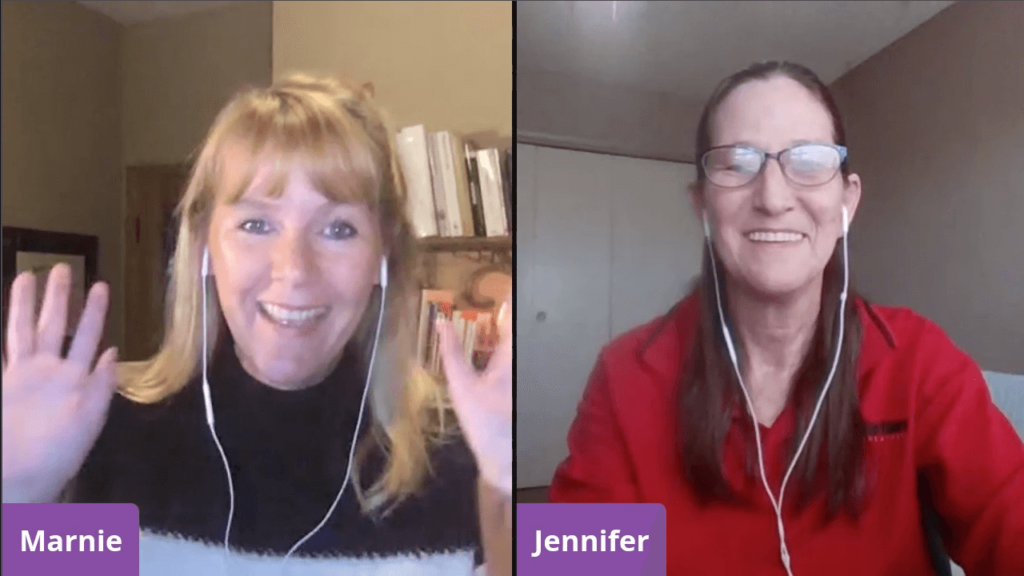
What if you discovered activities for your kindergarten reading instruction that enabled all of your class to be really reading words and sentences in the first month of school?
What if these students entered school well-below or below benchmark in DIBELS phonemic awareness, letter names, and letter sounds assessments? What if your instruction had to be whole class, all-day, 100% virtual?
Wouldn't you want others to know about this breakthrough?
That's the position that the 2011 Arizona ELL Teacher of the Year, Jennifer Glueck, found herself in the 2020 back-to-school season, so she's sharing with us just how 3 minor tweaks to her mainstream systematic phonics curriculum yielded results far beyond what anyone would think possible for students beginning the year below expectations.
Along the way she and I both encourage you to join the free Level Up Your Readers' Achievement in Just 5 Days challenge that Reading Simplified is hosting this October 3-7. During this challenge, teachers and parents all over the world will implement the first activity, Switch It, that Jennifer tried on Day 3 of this year that jumpstarted her students' success.
Choose your own adventure:
- Watch the full video below to hear Jennifer's story of these simple activities in her kindergarten reading class and see video snippets as well.
- OR, read about her story instead. [This video interview with Jennifer is from the 2020-2021 school year.]
Kindergarten ELL Class Began Below Benchmark
Jennifer could have been worried when she saw her incoming DIBELS data for her English Language Learners (ELL) Kindergarten class. All but 1 child were Below Benchmark, and most were Well Below Benchmark.
This was Jennifer's first time in Kindergarten and she would have to be teaching all day, whole-group,
100% virtually. Whoa.
See below for the DIBELS data that she received as she prepped for her first time teaching K....

Here's what Jennifer said about the beginning of the year:
It's my first year teaching kindergarten. I've been teaching first grade for the last eight years. So this year I took a step down to kindergarten. I wanted to get them before all those bad habits get put in there.
But I knew coming in that they were going to be really low. And they did testing at the beginning of the year and found out that, yes, most of my kids, except for the one, don't know any letter names. They didn't know any sounds.
They had no idea what letters even were. Most all of them were scoring zero on DIBELS. No names, no sounds. They didn't know how to blend or segment words at all. So they were just really coming with absolutely nothing....Also, I not only switched grades, I switched to a brand new school. So, yeah, this year has definitely been a year of firsts!
Jennifer's Concerns About the Mainstream Reading Curriculum
Besides the challenges of virtual instruction and students with limited early literacy preparation, Jennifer also expressed doubts about the curriculum she was given. The curriculum map wouldn't have students blending and reading simple CVC words until after 12 weeks of instruction.
Jennifer thought her students could do better! She said:
I had to also learn their new reading program, which is one that is used by many schools. It's widely recognized and known. But when I looked at the program and their curriculum map, I thought, "Now this just isn't going to work for me."
They have me teaching a lot of focus on letter names and then also the sounds, too. But mostly it's really focusing on letter names and handwriting.
And the worst part is that I'm only supposed to teach these kids two letters a week, which meant that we wouldn't even be starting to blend or segment or read words at all for like three months. It would take us 12 weeks to get through all twenty six letters of the alphabet and that it wasn't even including like the "th" and "sh" and those other sounds that they see every day.
So I just I knew this wasn't going to work for me, but I started the program just the way they prescribed in the curriculum.
Many kindergarten reading curricula begin in a similar slow and steady rate--likely so as to not overwhelm young students. Particularly, when one has students entering school well below benchmark, it may seem reasonable to not expect them to rapidly learn many letter-sounds and figure out how to begin reading.
However, when teachers begin reading instruction by revealing how our written code works--by revealing the alphabetic principle--students have quicker "aha's" about early literacy. When we choose activities that make plain how sounds and symbols connect in the context of whole words, students pick up:
- letter-sound knowledge,
- phonemic awareness skills, and
- early decoding and spelling.
In sum, when we tweak our presentation of beginning reading instruction, we may find that the slow and steady pace is not needed, as Jennifer found.
Jennifer Attempts 1 New Kindergarten Activity That Spurs Reading Growth
On the third academic day of school (after a few days of prep-for-school), Jennifer tried a new activity to the students, Switch It. During the previous day, she'd realized that many of them happened to know the short "a" sound, and she'd taught them already the "t," "f," and "b" sounds.
If they know at least 1 vowel, they can build, manipulate, and read words, she reasoned. Jennifer said:
Six hours is a long day to keep these little ones engaged. So I've got to pull out all the stops. And I knew going this slow through reading it wasn't working for me. So yeah, I think it was the third day of school and they only knew three consonants. We would have learned "t," "b" and "f" and that was it.
But we'd been doing something the day before. I don't even honestly now remember what it was. But I discovered in that I think I was reading them a story. I discovered that a lot of them, when they saw the letter "a," they knew it said /a/.
You would think that would be a first sound that they would learn in this program. But it it doesn't come for several weeks down the road. But since they knew it, I went ahead and ran with it.
I said, "Well, we've got one vowel; we have three consonants." So I just decided, "Let's give it a try." Luckily, all my kids, as part of our program, they do have little magnetic boards that have all the letter tiles on it. And so I knew they had those at home as part of our curriculum. So I had them all get out their whiteboards. And we only had the four letters on there that we've learned so far.

And we've started putting we started with "a," "t," "f," and "b" and then we went through Switch It. We did fat and fab and we just moved all those letters around.
And it just...they surprised me. They shocked me and amazed me because I'm looking out at my screen and they're all holding up their boards and they're doing it and they're telling me the words. And I just I thought that was just so amazing. And then we just started doing Switch It pretty much every day after that.
Fortunately, for us, Jennifer saved the video of this first time she tried Switch It with her Kindergarten ELL class! Watch below and notice how she's revealing the alphabetic principle, as well as building letter-sound knowledge and the phonemic awareness skills of segmenting and manipulating.
You're Invited to the Level Up Your Readers' Achievement in Just 5 Days Event
Do you see how the teacher is making plain the way our code works to these beginning readers? And they are getting it!
They are moving the letter-sound cards and holding up their boards with the right answer. Jennifer can see not only the few kids on the bottom of the above video; she also has another monitor with a full screen of children's faces.
Jennifer first discovered how powerful Switch It is during previous version of the free Level Up Your Readers' Achievement in Just 5 Days challenge.
This challenge is an opportunity for teachers, parents, and grandparents to try just 1 activity--Switch It--for 5 minutes a day to see great outcomes for their student(s).
Jennifer is coming back for another year for this challenge and we both invite you to join in the fun and great gains!
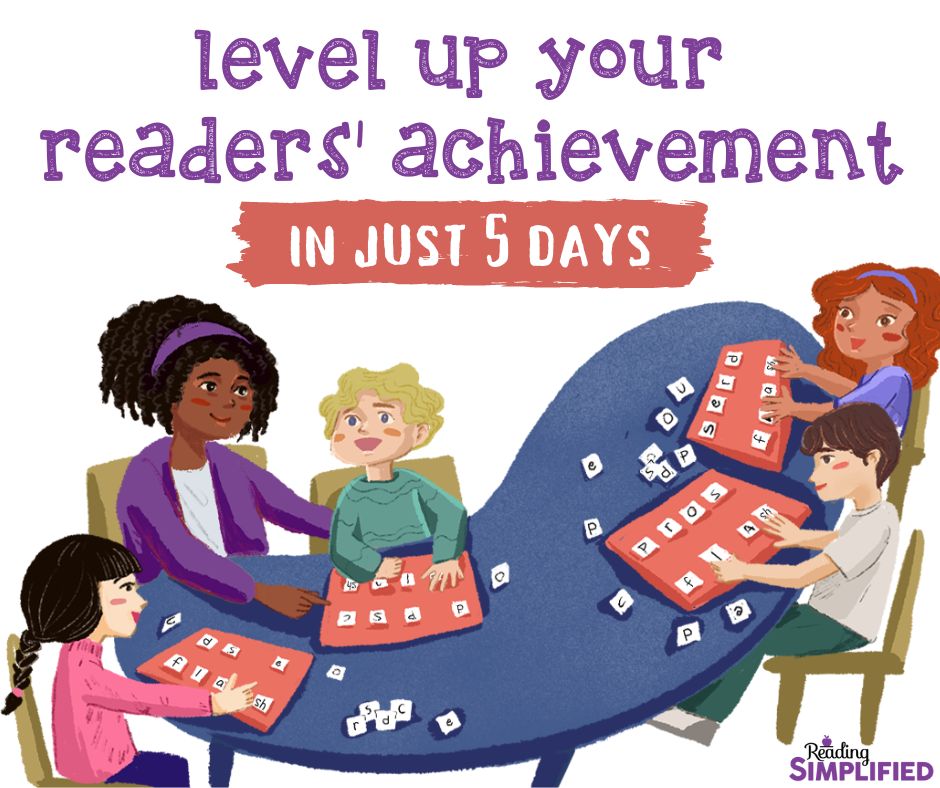
Here's what Jennifer recalled about the first Level Up Challenge she participated in:
Yeah, it was, I think, almost two years ago now and I was teaching my first grade students. And there's always that handful of students in your class that you just can't reach. And they these were students who have been going to reading intervention all year long.
And I believe that the challenge when you did it was March. So it's getting close to the end of the year.
A friend of mine had forwarded your Facebook post to me. And I thought, sure, why not? I'm always looking for ways to make things better. And these kids, it was just so hard for me.
It was about five or six kids. I just no matter what I tried, I couldn't get through to them.
And so I signed up for the challenge and I started doing it with the small group of little boys and girls.
I was just amazed at it. Just like you say, the light bulb clicks for a lot of them. That's all it takes. Once they figured out what they're supposed to do with those little lines, then all of a sudden it just it all makes sense to them.
So I kept doing Switch It with them. And by the end of the year...
[Our year ended early that year. We had some issues here in Arizona. I'm not sure if any of you are familiar: We had a strike that year where we were out of school for several weeks. So that kind of cut my time off to with them.]
But even with the short amount of time I had with them, I'd finally gotten through to them. The reading intervention teacher was like, "What did you do?"
Because all of a sudden it was just like this small group of boys and girls--who formerly had no idea what reading was--all of a sudden they were reading. And I just I loved it.
I fell in love with the program. I've been using it ever since I've been hooked. I joined the Reading Simplified Academy. And yeah, this will be my third time now doing the Level Up reading challenge because it's just it's so great.
Kindergarten Students Learn 28 Letter-Sounds in Less Than 8 Weeks
While Jennifer's curriculum would have her wait another full month before exposing her students to all of the 26 letters of the alphabet, with the time-saving activity of Switch It, her students have already learned 28 letter-sounds in the middle of October!
In our interview, she held up the letter-sounds that the children had mastered, including "th" and "ck."

A Second Activity Tweak to Build Kindergarten Reading Skills
While Switch It accomplished so much for Jennifer, it still doesn't teach how to blend sounds to read words, or decode. Rather, Switch It lays the important groundwork before the teaching of blending.
So, Jennifer folded in another Reading Simplified activity, Read It, to coach students in how to blend sounds to read words. Read It includes just 3 steps:
- Teacher invites students to read word (and coaches them on the Blend As You Read decoding strategy).
- Students write the word and Say each sound as they Write each sound.
- Students Erase each sound as they Say each sound.
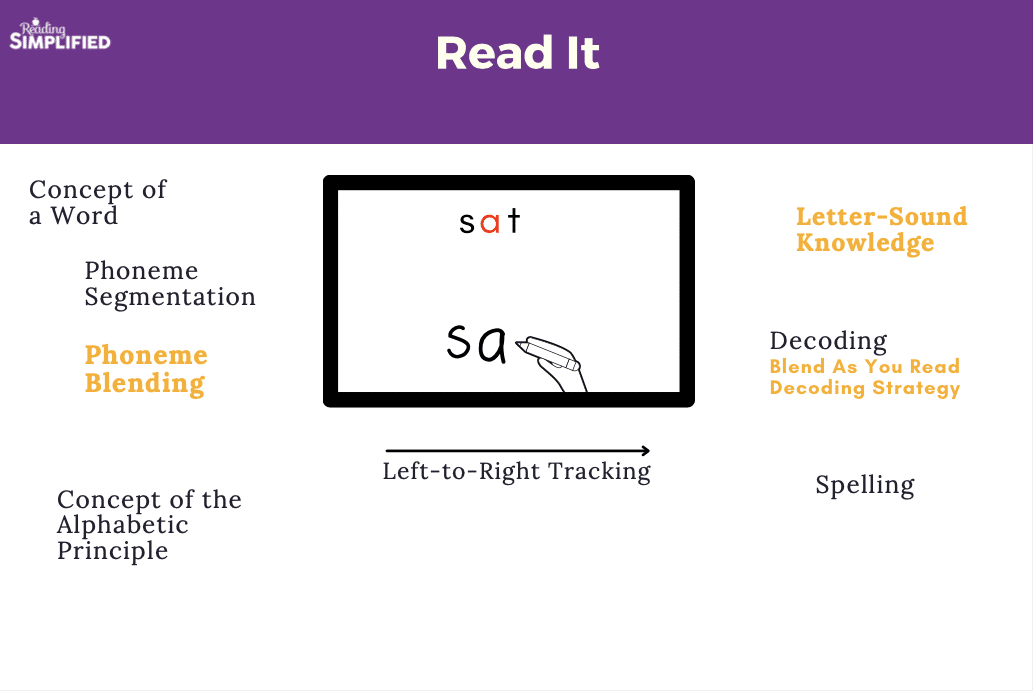
Enjoy the video snippet below from early October in Jennifer's class as she guides the students in the activity Read It.
I love how Jennifer's pointing out to the children why they're doing what they're doing. She's explaining to them, "This is how you're going to learn--connecting those sounds with those symbols."
This linking of the sounds and symbols on the left side of their brain allows them to read words. So with this little addition of just presenting students with a 3-sound word, her kindergarten students are learning how to read words--even though this is not yet called for by her curriculum.
I also hope you notice that the Blend As You Read technique was a really important part of moving them along because remember, her initial phonemic awareness scores were really low for this group of kids. So blending is hard for kids who don't have good phonemic awareness.
Thus, Jennifer added in Switch It and Read It to prepare her students for reading real books, and after about a month of these activities, she decided they were ready to move into reading simple decodable texts, such as these texts from the Reading Simplified Academy:

A Final Activity Tweak: Beginning to Read Simple Decodable Texts
Now that Jennifer students understand the alphabetic principle, know a lot more letter-sounds, and can blend sounds to read words, she begins doing whole group readings of simple decodable texts, such as the ones above.
Given the constraints of the whole class, virtual format and because they are so young in their reading development, Jennifer elects to read aloud the texts the first read-through to her class. Yet, she challenges them to follow along with their eyes.
We call this approach to early reading instruction Buddy Reading. Over time, Jennifer will fade out her support and asks the students to read more and more of the words on their own.
She doesn't simply read aloud the texts, however. She also exaggerates and elongates the sounds in words so students continue to be coached in how our written code works. She also repeats words and sentences immediately after her first read so that students would be more likely to learn how to read the words.
After this first read through with the students' microphones silent, Jennifer unmutes the class and asks them to read along with her! It's a bit noisy but the kids are engaged. She can watch their screen to see if they're engaged. And she regularly praises children by name for participating.
This method of oral reading is obviously not ideal, as Jennifer acknowledges, but in a COVID-19 world, it's likely a reasonable option. We can hear them, and Jennifer attests that 80 to 90% of the students are reading some or all of the words during this 2nd read-through. Fortunately, these kids get to go back to the classroom next week so Jennifer is excited to listen to them read individually in small group settings!
Buddy Reading Example Followed by Re-Reading Example
There you have it! Just 3 simple tweaks to traditional kindergarten reading activities and nearly a whole class of ELL students is reading in the second month of school!
Jennifer didn't just teach letter-sounds and phonemic awareness in isolation. Instead, she added two activities that teach decoding in the context of words--Switch It and Read It.
Then students were ready to get into real texts--given a lot of teacher modeling and support a la Buddy Reading. As a result, the students see themselves as readers and they are off to a great start to their educational careers.
Despite the challenges of this 100% virtual COVID year, Jennifer and her students' parents have seen surprising success! She says...
I know we had our parent teacher conferences last week just before we left for fall break. And so many of the parents had commented they were just amazed that the children were reading and able to do that. They didn't think that they could at this time.
You know, they've got older siblings who weren't reading in their first month of kindergarten. And yet here these little ones are! So they were very happy and very surprised to see it.
As Jennifer said, the breakthroughs began with just 1 activity, Switch It. And you have a chance to get complimentary professional learning on how to implement Switch It most effectively this coming week with the Level Up Your Readers' Achievement in Just 5 Days Challenge.
Are you in? Please sign up for the emails, video training, inspiration and community, and chance to win prizes!

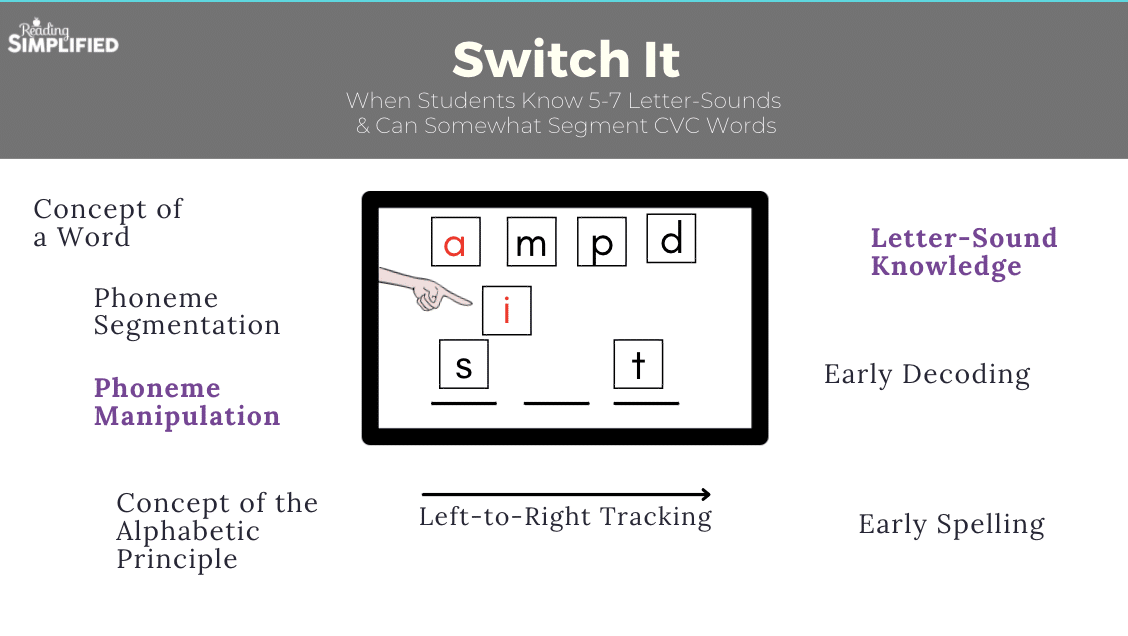
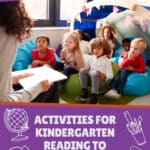

I love switch it. I have found that student enjoy it as well.
Thanks for being an encourager as always Suzanne. That’s a great point that kids think Switch It is a game!
Marnie you are doing a great job in providing us with the resources and the personnel to show us how they use the switch it to help students master the art of reading In a short time and the fine results they are getting. thanks. Jennifer, I am going to use the switch up activity with the one vowell and four consonants I have taught them. Really appreciate it thanks. Will let you know the results.
Thanks so much for your kind words! May this serve your readers well!
HI Arthurine, I am glad that you are trying these activities with your students. How is it going? We would love to hear about your progress and successes.
I love this video I watch it many times..
The way Jennifer interact with the students, her comments re really amazing.. Thank you Marine for making it possible.. Switch activities helped my students a lot, specially when English is a foreign language..
So glad to hear it serves your readers well!